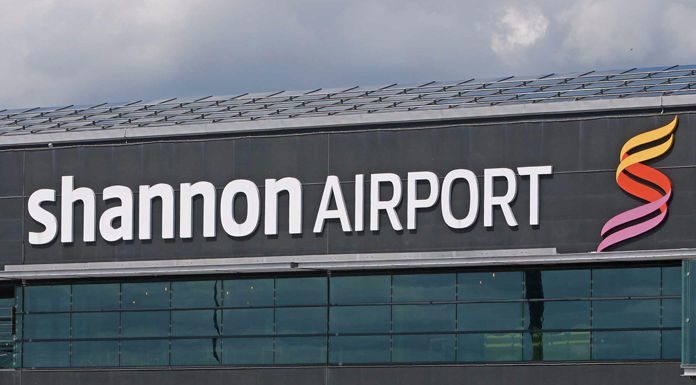A US MILITARY PLANE was forced to land at Shannon Airport, despite awful flying conditions, in order to save the life of a wounded sailor, who needed immediate surgery.
The incident in question happened back in April, but the details of the flight, codenamed ‘Reach 445’, are only just emerging now.
The crew were forced to make a dramatic u-turn while flying from Germany back to the US after it became apparent that the wounded American sailor was in desperate need for medical attention, as he was bleeding out and his kidneys had failed.
Protocol quickly went out the window as they flew over the Atlantic, some six hours from the US coast. The crew dramatically decided to turn around and divert to Ireland, which was just 2 hours away, in order to save the sailor’s life.
As they approached Ireland, weather conditions worsened, but the crew pushed on.
 The heroic crew landed at Shannon Airport despite thick fog and pitch blackness in order to save the sailor's life
The heroic crew landed at Shannon Airport despite thick fog and pitch blackness in order to save the sailor's lifeThey reached Shannon Airport at around 2am and, despite pitch blackness as well as dense fog, the plane safely touched down and the sailor was quickly rushed to University Hospital Limerick after the crew had alerted Shannon authorities to have an ambulance ready.
The crew have now been nominated for the highest award for bravery, the Air Medal, after the incredible and heroic feat of deciding to land with just 30 yards of visibility, to save the life of the sailor.
The pilot of the plane later admitted that he could only see the runway when he was just 100 feet above the ground and described it as the most challenging landing he’s ever done.
Air Force Capt. Forrest Lampela described the extraordinary situation:
“We were approximately halfway over the ocean when the patient started to destabilise,” he said.
“They couldn’t get his blood levels under control … he was bleeding out. They didn’t have enough blood to keep him stabilised.
“His kidneys had failed, so they needed a hospital.
“I was probably four hours from the tip of Canada, and I was probably six hours from Boston. I was approximately two hours from Ireland, probably three to England, and [roughly] five hours to Iceland.”
Lampela added: “The landing itself was not eventful. But I will tell you, with a patient you have in the back, and going through 200 feet above the ground, and you still don’t see anything … you start to get really [anxious and hope] that you see the runway real quick.”
24 hours later, the sailor was transported back to the US in a stable condition and now the six flight crew on board look set to be honoured for their life-saving efforts.
Gen. Maryanne Miller, Head of Air Mobility Command (AMC), said in a statement, “ The crews of Reach 445 highlight that our incredible airmen are our greatest advantage.
“Sound decision-making and superior care once again bring a hero home to his family,” she added.

